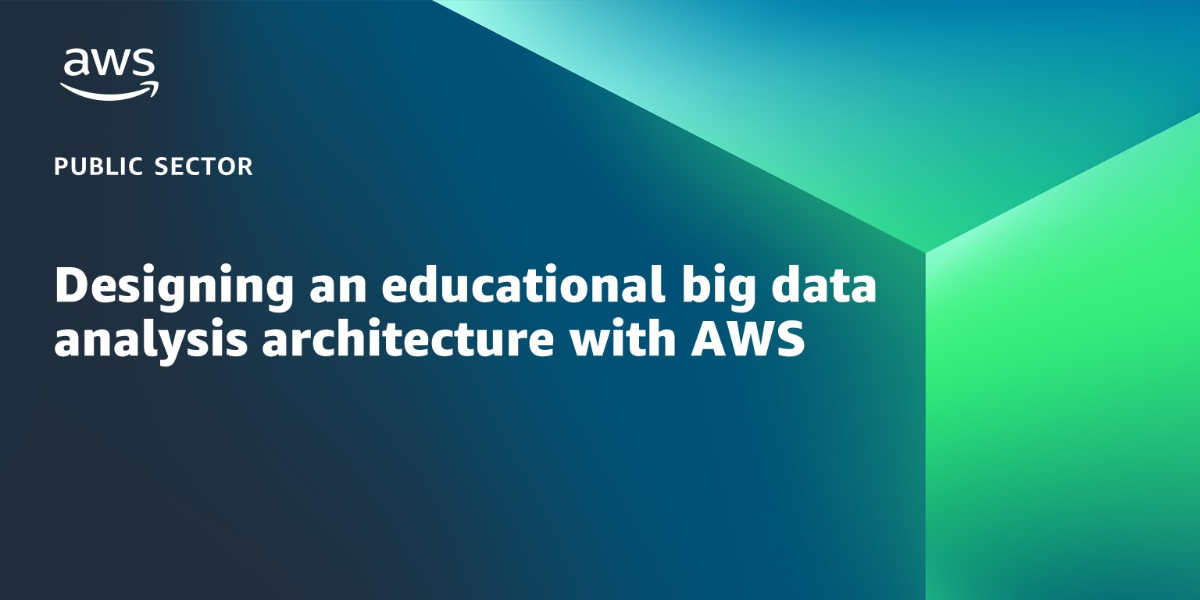AWS Public Sector Blog
Tag: Amazon S3
Civix simplifies online campaign finance reporting with AWS serverless technology
Civix, a government technology (GovTech) company and AWS Partner, uses AWS to provide software and services that support multiple public sector use cases, including election management, grants management, and more. Civix saw an opportunity to streamline how filers and third-party vendors manage and report disclosure data to states. Civix worked with the AWS Service Creation team to design and launch a serverless solution on AWS to support filers and campaign management vendors and to increase finance transparency for the constituents they serve.
Designing an educational big data analysis architecture with AWS
In this blog post, learn a high-level architecture, built on AWS, that uses a graph database to analyze unstructured and structured educational data that can, for example, help inform a recommendation to a student for the appropriate courses to take in their next semester based on multiple personalized data factors.
Calming airport data turbulence with EASE
Airports receive data from dozens of disparate sources, but this data can lack the collective unity needed to see the bigger picture. The Cincinnati Northern Kentucky International Airport (CVG) saw an opportunity to turn down the proverbial volume on their data. Using AWS, CVG created a first-of-its-kind tool using data for predictive analytics and proactive notifications, now known as Enterprise Awareness & Situational Exceptions (EASE).
Singapore’s OneNUHS App uses AWS to help patients take ownership of their health
Singapore’s National University Health System (NUHS) collaborated with Integrated Health Information Systems (IHiS), Singapore’s technology agency for the public sector, to develop the OneNUHS App. The mobile healthcare application extends healthcare services beyond the hospital, providing telehealth services like video consultations with doctors and more. To accelerate time-to-launch, save costs, and support reliable access for Singaporeans, the OneNUHS app uses AWS.
Addressing federal record retention in mobile device messaging
Virtually all federal, state, and local government agencies are subject to various data retention and records management policies, regulations, and laws. AWS Wickr provides federal agencies with an innovative solution that can help them build public trust by protecting sensitive communications, while supporting the capture and management of records.
What US federal customers need to know about memorandum M-21-31
The US Office of Management and Budget published M-21-31, a memorandum for federal government agencies to define event logging requirements related to cybersecurity incidents. These guidelines aim to support the detection, investigation, and remediation of cyber incidents on federal information systems. The memorandum defines various event logging (EL) tiers and the log data that must be captured for various log categories. Learn the services from AWS that have been called out explicitly in the memorandum for logging and retention requirements at the EL1 level, and the resources you can use to set up these services to capture the required log data.
How to create a cybersecurity analytics platform with AWS analytics and machine learning
Cybersecurity analytics is a systematic methodology designed to collect, ingest, process, aggregate, and analyze security events. This methodology empowers organizations to proactively perform security investigations, powered by advanced analytics and machine learning (ML), which help mitigate cyber issues more effectively and efficiently at scale. Learn about the core components of a cybersecurity analytics framework and how organizations can use AWS to design a cybersecurity analytics platform with analytics and ML services.
How JDRF uses AWS to power Type 1 diabetes research
Advances in technology are transforming the way health research can be conducted. It is now possible to integrate data from siloed sources into a data lake, a central repository where health data are aggregated and analyzed at scale. Now, more than ever, there are opportunities for collaborative research to accelerate life-saving medical innovation – and that’s exactly what JDRF International, the leading global Type 1 Diabetes research and advocacy organization, is doing with AWS.
How government agencies can vet external data in minutes with data interchange zones
Learn how government agencies can use AWS to build data interchange zones to automate their ability to ingest and validate data from other agencies or external entities in a secure manner. Automating this process can help agencies save time to focus on more strategic aspects of their mission.
How one nonprofit commemorates enduring sibling relationships with AWS
SibsForever is a nonprofit created to support and provide a safe community for people who have lived through the loss of a sibling. SibsForever.org is a progressive web application that runs on AWS and functions as an online memory book for surviving siblings. By sharing their stories and experiences, the SibsForever.org community has become a safe and supportive space for surviving siblings. In this guest post from SibsForever founder Audree Thurman, Audree describes why she decided to work with AWS to create her nonprofit’s web application, and how she built SibsForever in the cloud.









